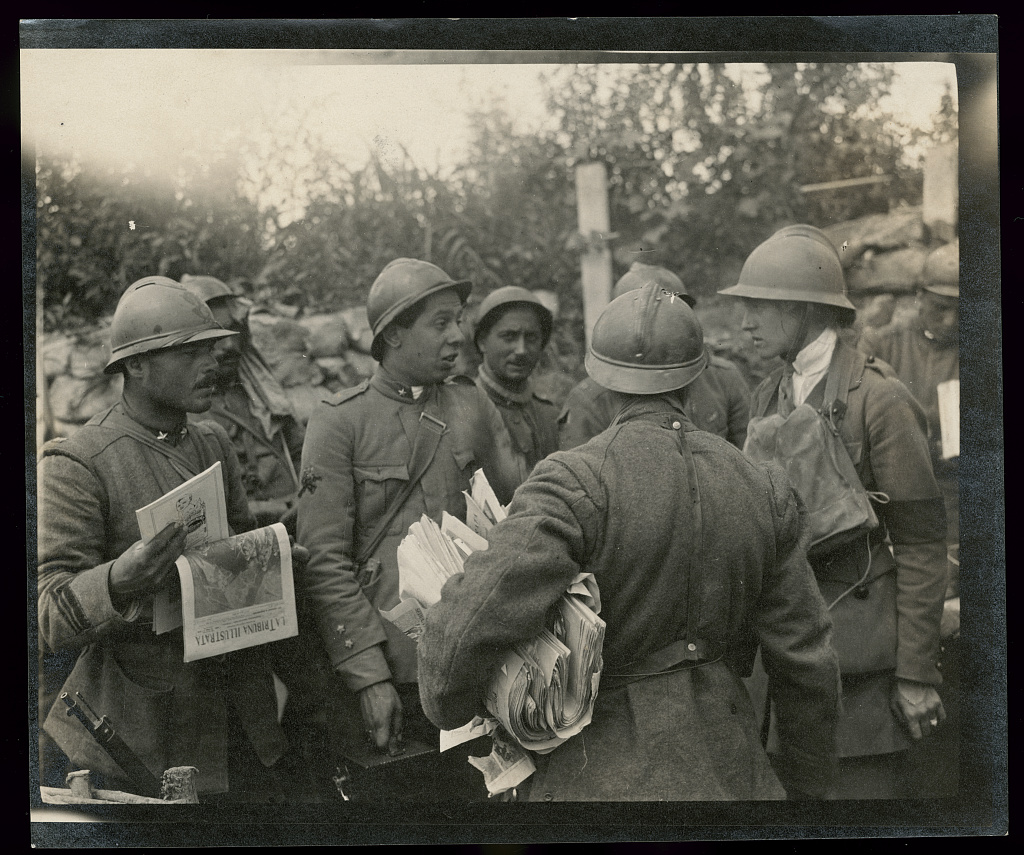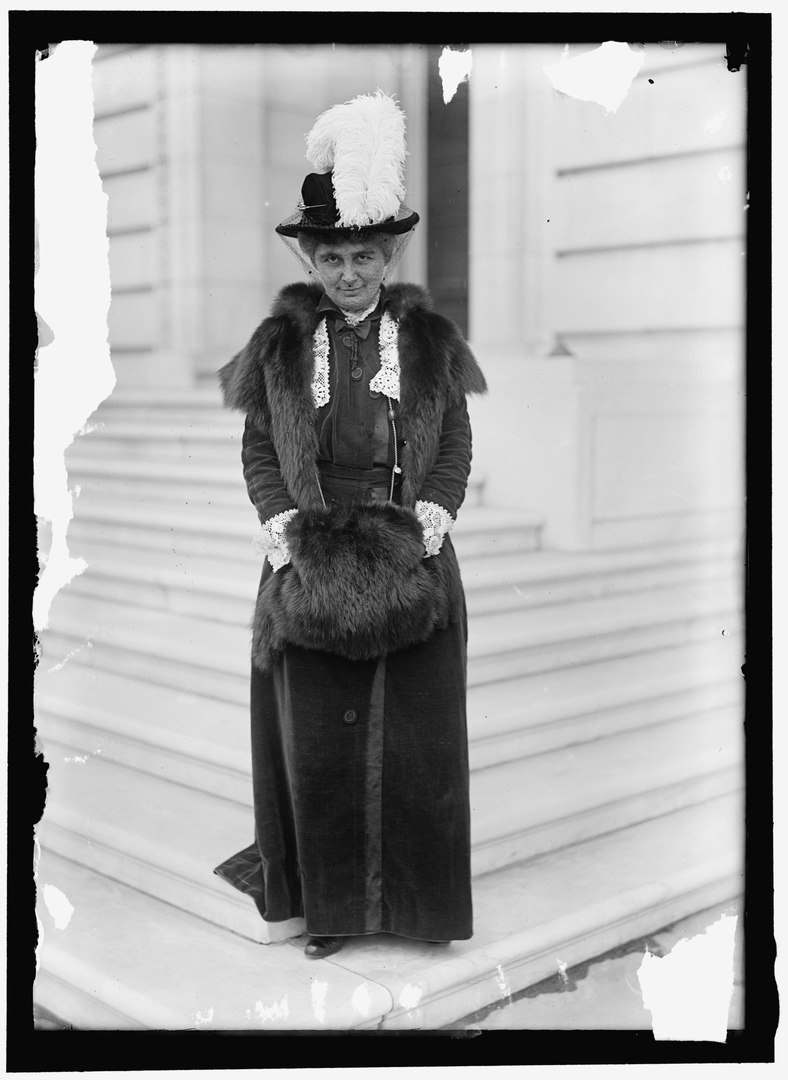By Stephanie Seul
Newspaper historian Tim Luckhurst argues that the First World War was ‘reported from an almost exclusively male perspective’ and that women war correspondents were ‘immensely rare exceptions’. I will qualify this perspective. During the First World War, a considerable number of women from belligerent and neutral countries reported from all major theatres of war in Europe, the Middle East, Africa, and Asia. Their reports could be read in major newspapers and magazines around the world.
The forgotten voices
Given the number of female war reporters, it is astonishing that few academic studies have been published. Moreover, most of the current literature focuses on American journalists. As a result, we know much less about women from other nations. An obstacle to any comparative study is language skills – most sources on war reporters from non-English-speaking countries are available only in their original languages.
How can we trace the activities of female war correspondents, many of whom have been forgotten? In the digital age, online newspaper archives allow us to retrieve the names of, and the articles written by, women with a few clicks through a full-text search. Moreover, the women occasionally published books and autobiographical accounts which are available online. Some war correspondents also left private papers or collections of their photographic work, e.g. Alice Schalek, Noëlle Roger, Peggy Hull, Helen Johns Kirtland, and Alice Rohe.

Library of Congress Prints and Photographs Division Washington, D.C.
Typology of women war reporters
Still, identifying women war reporters is not easy. Broadly defined, war correspondents distributed eye-witness accounts of armed conflict to the public. However, who could be considered a war correspondent was not clearly defined during the First World War. Different types of reporters were involved in the war’s coverage. Some were officially accredited by the armed forces or obtained other official permits to visit the front. Others were unable to get near the front but still witnessed the fighting or reported on the impact of the war on soldiers and civilians. Moreover, nurses in field hospitals wrote about their experiences. Professional journalists accredited by major newspapers were joined by freelance reporters with little experience of war reporting. War news by women was not only published in the daily press, but also took the form of travelogues, (photo) essays or autobiographical books. A large number of women war reporters had a literary background which substantially shaped the way they wrote about the conflict.
Given the diversity of female war journalism, I suggest classifying the women in six categories. This typology focuses less on the formal qualification of women as professional journalists than on the environments and conditions they were working in. I have illustrated these categories using six biographical case studies:

Photograph by Harris & Ewing
Library of Congress Prints and Photographs Division Washington, D.C.
- Women accredited by the armed forces as official war correspondents and reporting from the vicinity of the battlefields (Alice Schalek, Austria, reporting from the fronts in Italy, Serbia and Galicia)
- Journalists sent out by their newspapers to cover the war, usually without official accreditation by the armed forces (Sofía Casanova, Spain, reporting from the Eastern Front)
- Nurses reporting on their experiences in the war zones (Noëlle Roger, Switzerland, reporting from a French military hospital and on the humanitarian engagement of Switzerland)
- Journalists reporting on the home front (Matilde Serao, Italy)
- Women reporting on the war in disguise (Mary Boyle O’Reilly, United States, passed through the German lines in Belgium disguised as a peasant refugee)
- The failed career of a young would-be freelance reporter (Dorothy Lawrence, England; she entered the French sector on the Western Front disguised as soldier but was caught and forbidden to write about her experience)
The nationality of these women should not obscure the fact that the six types of war reporters were found in all theatres of war. Working conditions and access to the frontline granted to women varied greatly. In some countries certain types of women war reporters were more common than in others. A case in point is the Austro-Hungarian Empire, which offered military accreditation to a number of women from the beginning of the war. In contrast, the Allies on the Western Front were very restrictive in granting women access to the front.
A transnational dimension
Female war reporters not only published their accounts in newspapers of their country of origin, but also in the press of foreign countries which added a transnational dimension to their work. Notable examples include the Austrian Alice Schalek who published in Austrian, German and German-American papers, and Florence MacLeod Harper from Canada who worked for the American magazine Leslie’s Weekly. The German Thea von Puttkamer published in the German, Hungarian, Turkish and German-American press.
The social background of women war reporters
Who were the women war reporters? With the exception of nineteen year old Dorothy Lawrence, they generally came from the higher social classes and were well educated. They were financially independent and had established professional careers in journalism, literature, travel writing and photography. Often they were politically active as suffragists, pacifists and social reformers. Frequently, they broke with the social conventions of their times, when women were expected to become housewives and raise children. Moreover, their success or failure as war reporters depended largely on their social background and pre-war professional standing. Women were recruited because of their journalistic reputation and personal connections. After the war they continued to publish for their newspapers, often for several decades (e.g. Alice Schalek, Sofía Casanova). In contrast, the case of Dorothy Lawrence shows that a newcomer to the field of journalism with no connections was likely to fail despite of her war adventures.
Widening the war images provided by men
Women did not limit their war reporting to the so-called ‘woman’s angle’. Their reporting was as diverse as the fronts they observed. The ability of women to visit the front was often restricted, but they were determined to cover all aspects of the war. Taking personal risks, they visited the front even though fighting was occurring. They reported on combat, the suffering of (wounded) soldiers, the destruction of cities, villages and landscapes. Women also wrote about nursing, relief work and the home front. They published their eyewitness accounts and photographs in well-known newspapers and magazines, generally under their own names. Women covered the First World War from many different perspectives, thus complementing and widening the war images provided by men.
Further Reading
Seul, Stephanie: “Women War Reporters”, in Ute Daniel, Peter Gatrell, Oliver Janz, Heather Jones, Jennifer Keene, Alan Kramer, and Bill Nasson (eds.), 1914-1918 Online: International Encyclopedia of the First World War, issued by Freie Universität Berlin, Berlin 2019. DOI: 10.15463/ie1418.11385.